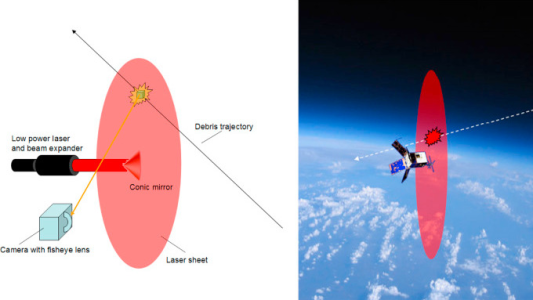Coincident Laserheet (COLA) Particle Monitor

The purpose of the project COLA (Coincident Lasersheet Particle Monitor) was to perform a feasibility study for an in-situ lasersheet particles/debris detection system enabling the detection and identification of small sized space debris/meteoroids currently not detectable from ground and that can nonetheless present important hazards for space missions. The detection system must be able to determine and reconstruct particle shapes and trajectories for sizes and velocities ranging from 1 mm to 10 mm and 2 km/s to 20 km/s, respectively. The lasersheet detection area must be at least 10 m2 and trajectory reconstruction must be possible with a resolution of 10°. This work included the development of a simulation software for the evaluation of different detection concepts (continuous laser sheet generation and LiDAR) and technical trade-offs. The MASTER database was used to enable the generation of statistically representative samples (for the orbit considered). Optical properties (phase function) of debris must be taken into consideration during the simulation and therefore characterization of a series of representative samples in laboratory is necessary. Finally, a flight model development plan was proposed for the most interesting concept.
